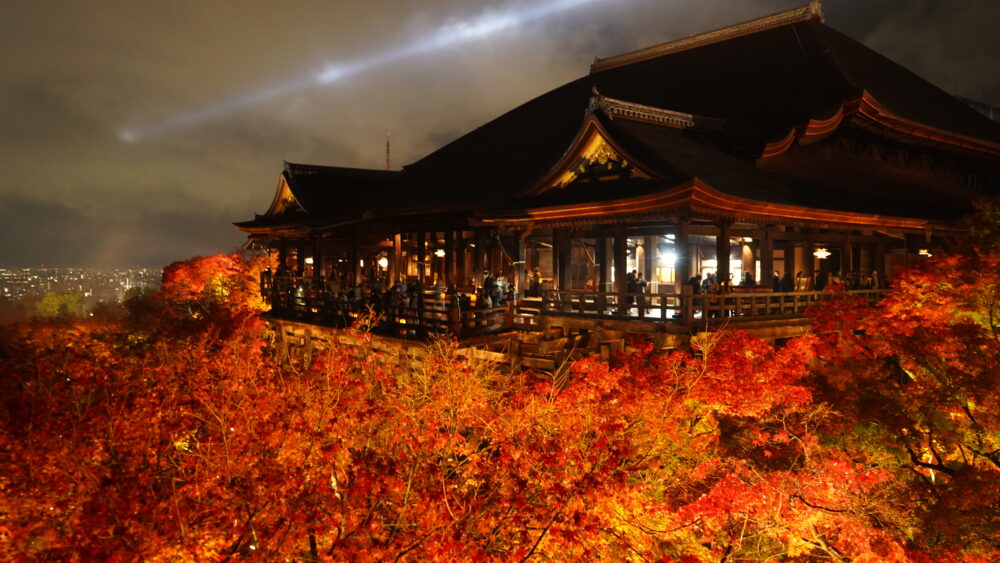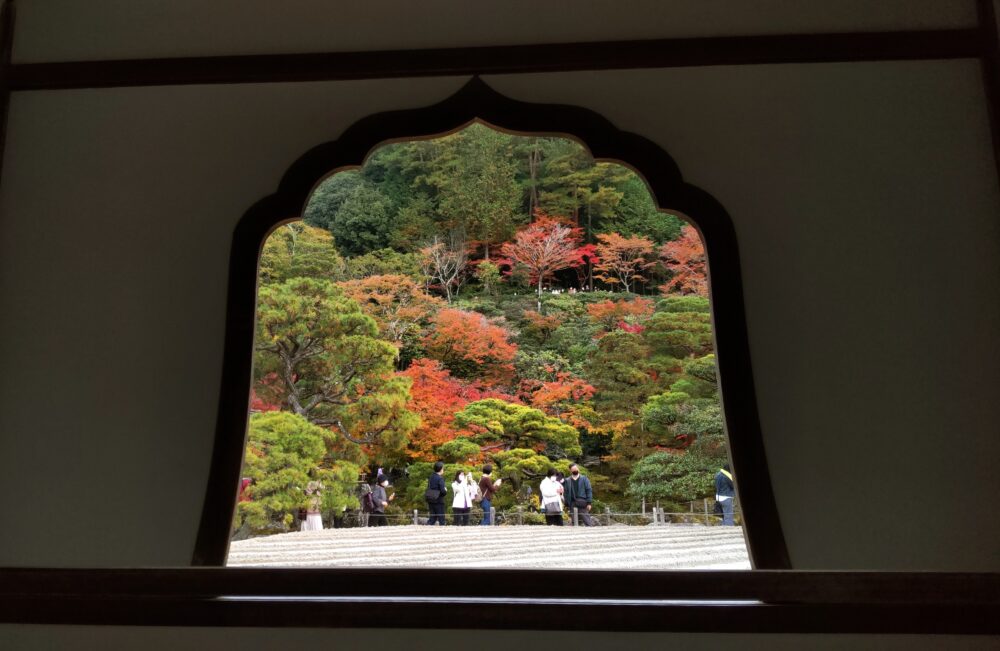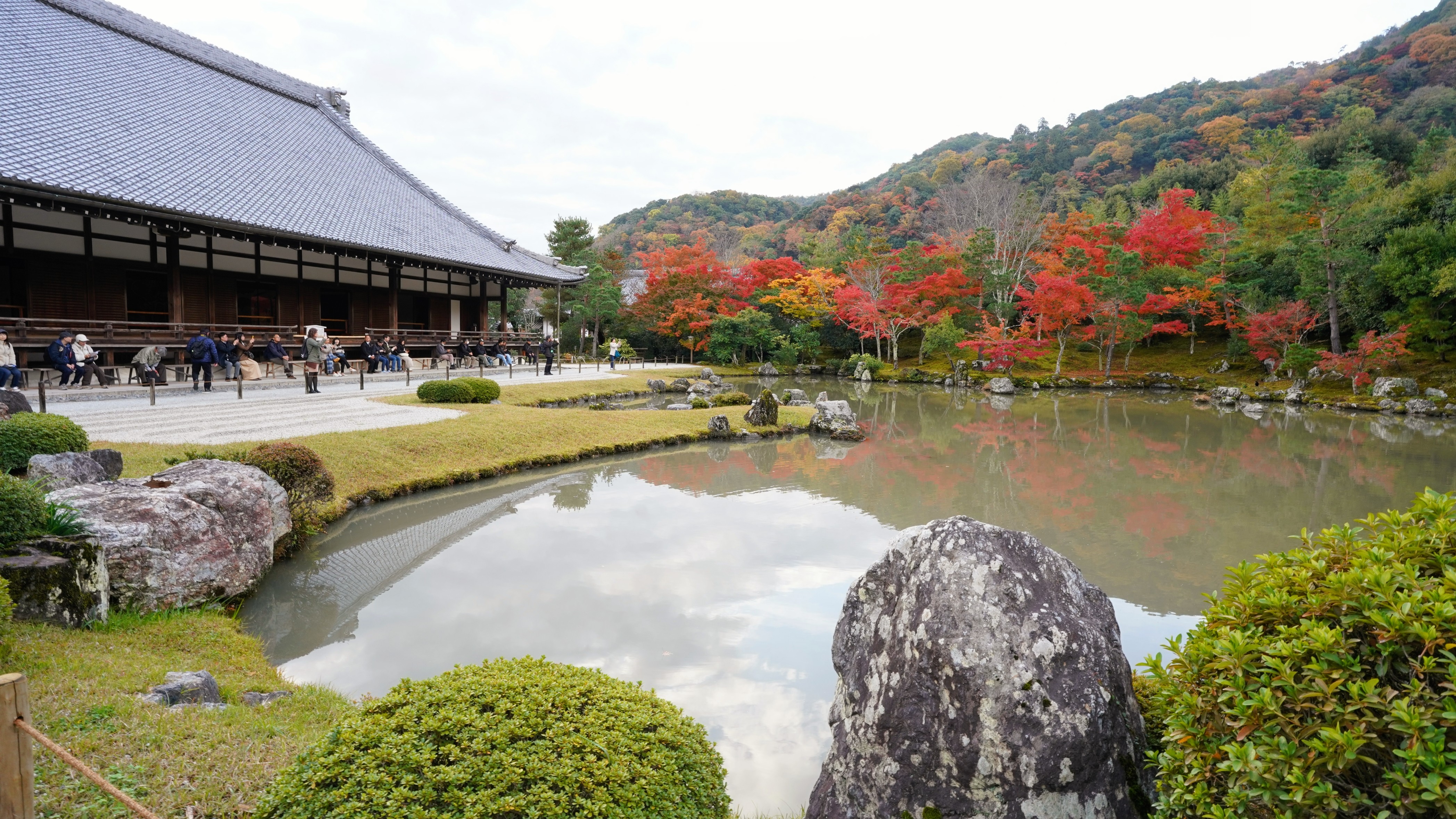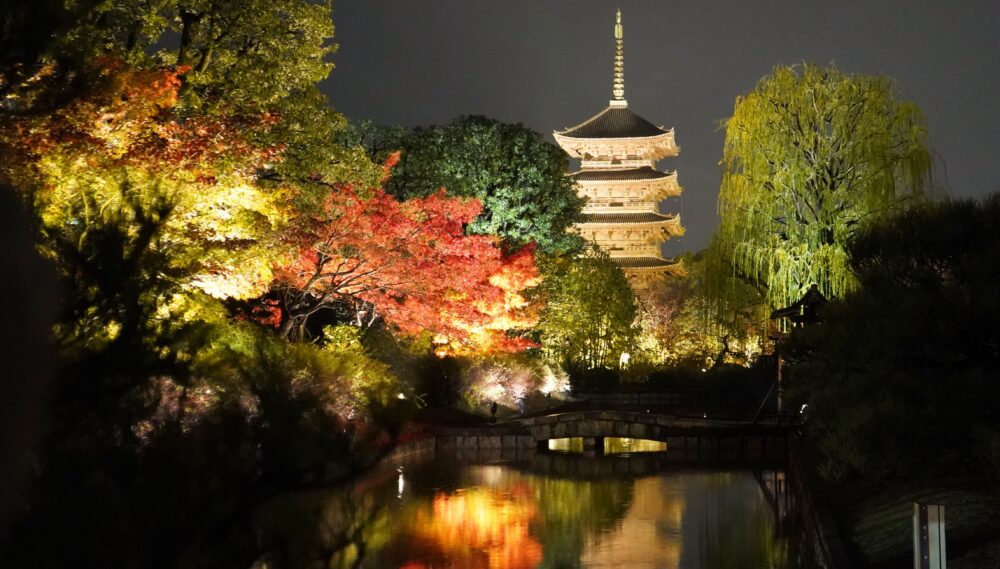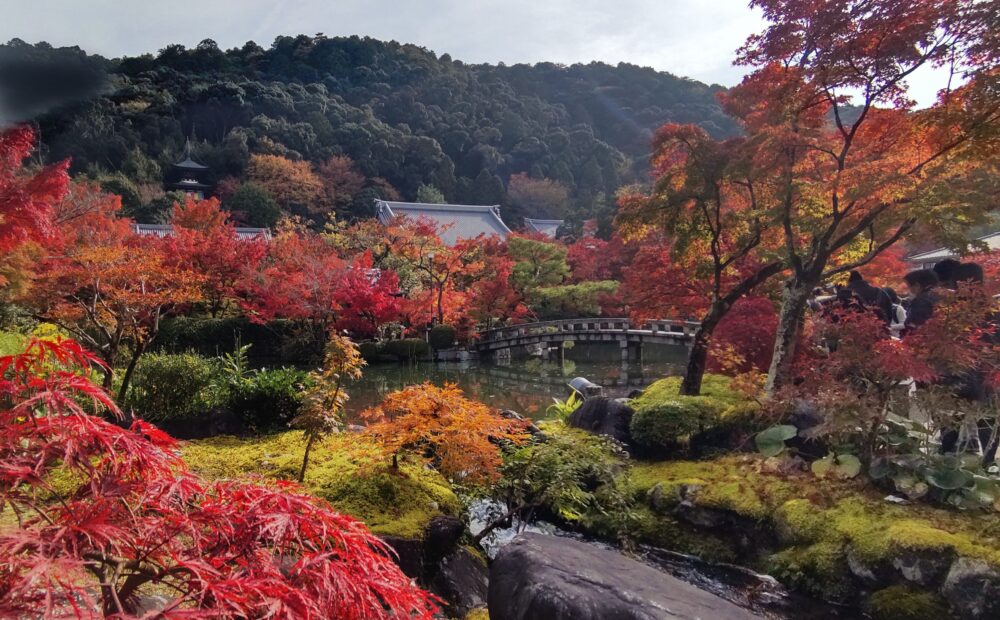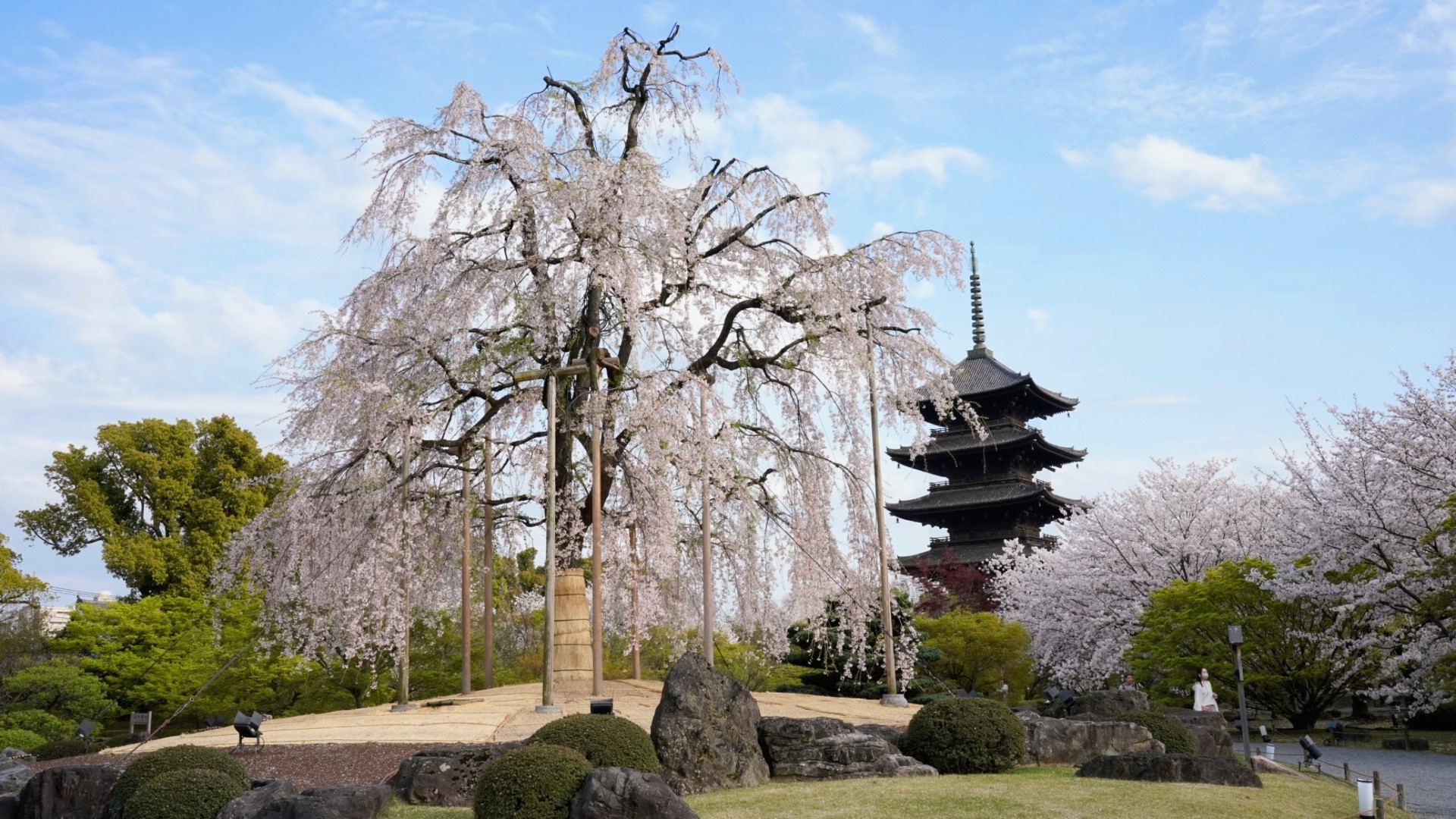Kennin-ji Temple : Beautiful gardens and Best season to visit
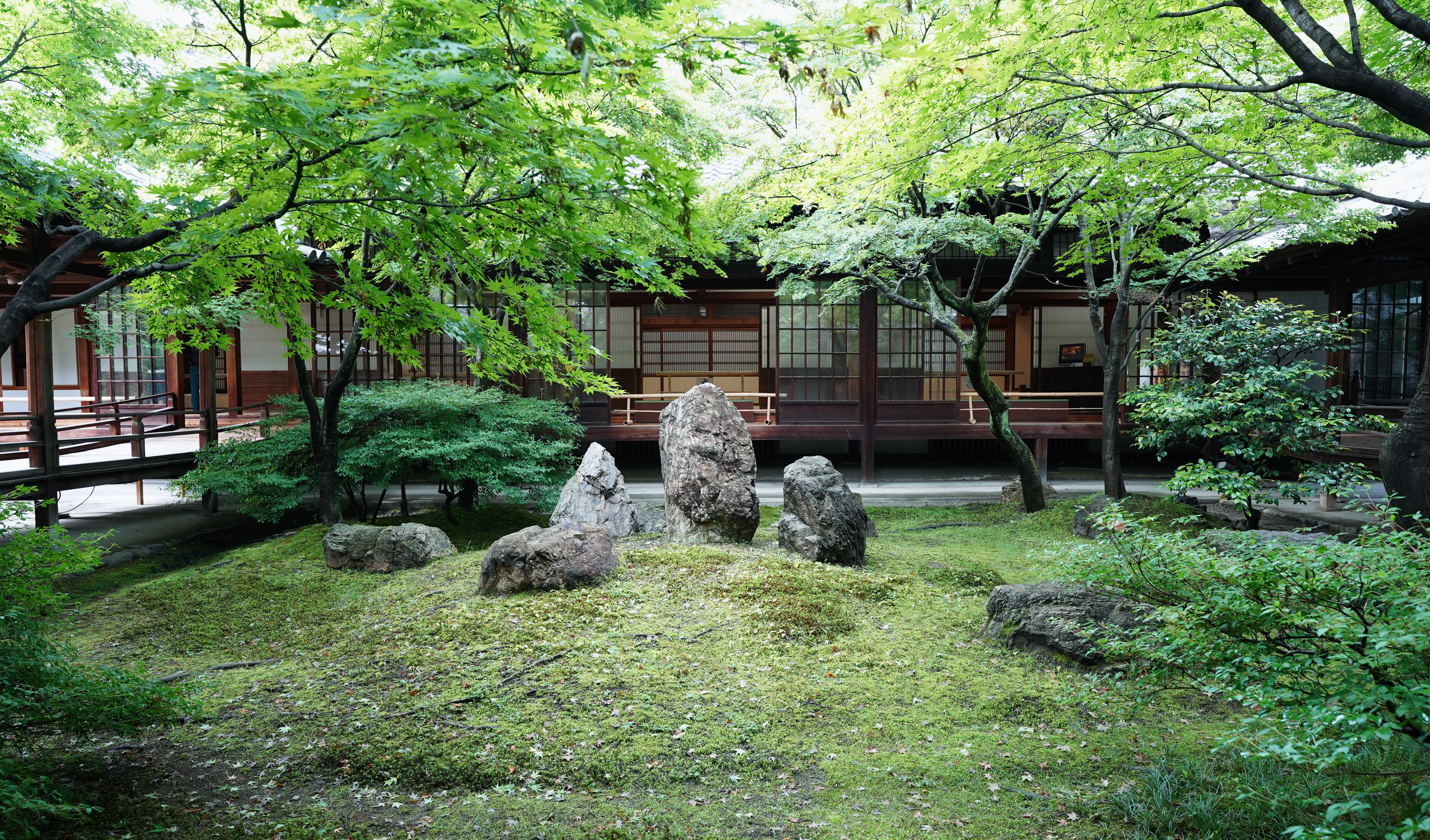
Kennin-ji Temple offers a captivating experience with its gardens that change with the seasons. Discover the unique features of each garden and the best time to view their beauty.
Kennnin-ji Temple
Kennin-ji Temple, the oldest Zen temple in Kyoto, is located in Higashiyama Ward. Founded in 1202, it has weathered historical events like the Onin War(1467-1477), which destroyed much of the temple. Despite the destruction, Kennin-ji has been carefully preserved and restored. Today, visitors can explore its magnificent halls, tranquil gardens, and admire its intricate architecture.
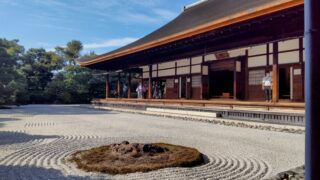
Gardens
Kennin-ji Temple is known for its beautiful Zen gardens, which offer a tranquil escape from the bustling city. Here are a few of the highlights
Daio-en Garden
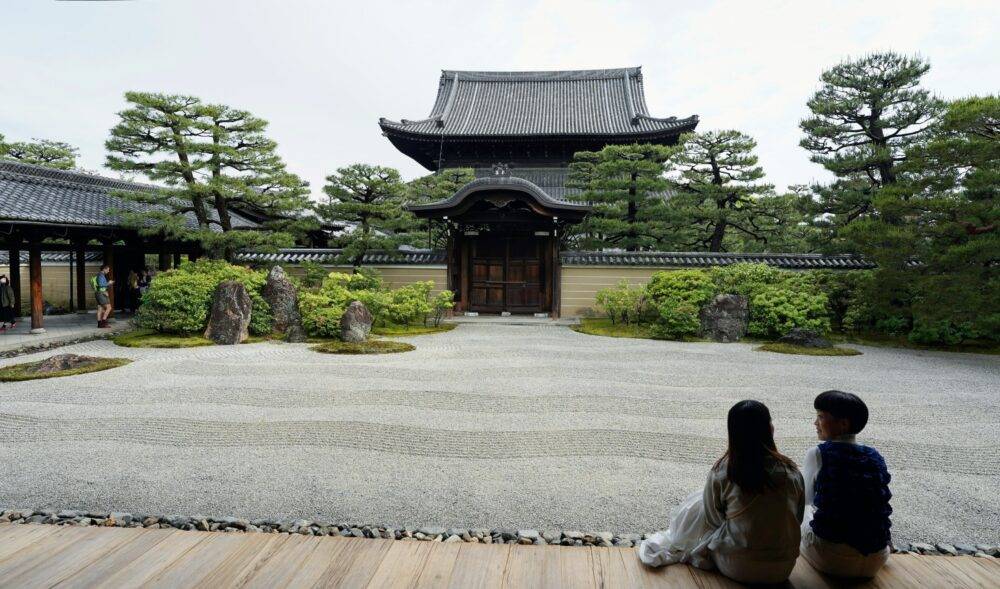
Daio-en is a large dry landscape garden adjacent to the Hojo Hall. Originally designed as a ceremonial space where people entered the garden for rituals from the hodo hall at the back of the garden through the Mukaikaramon gate, the garden is currently being renovated by gardener Kumakichi Kato. The harmony between the dry landscape garden and the Mukaikaramon Gate is remarkable and has made it famous among Japanese gardens. The garden has a peaceful atmosphere, and visitors can relax and enjoy the view from the engawa (veranda) of the hojo.
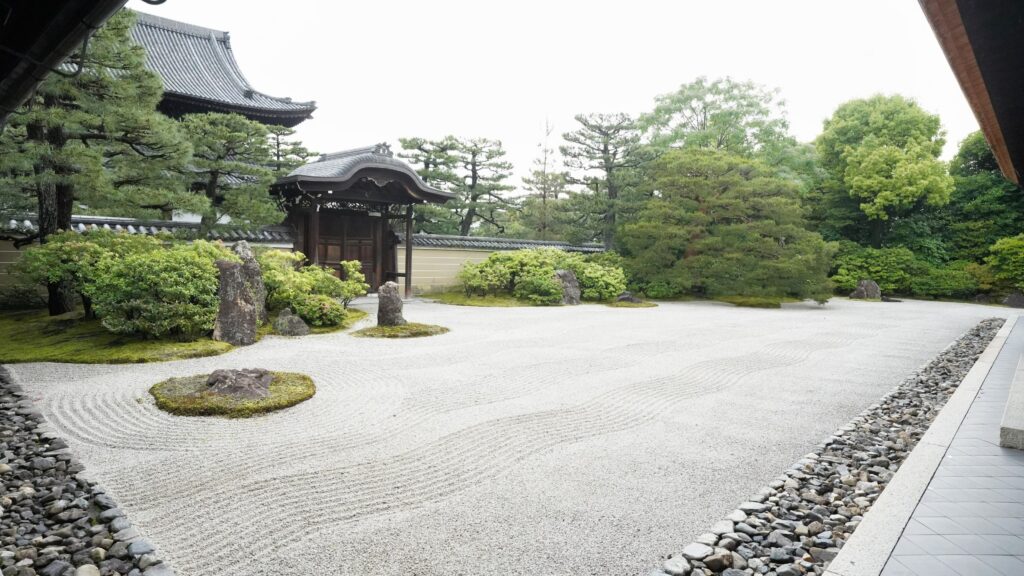
The elements of the garden are composed of arranging rocks representing mountains, finely crushed granite symbolizing the vast ocean, and moss-covered areas representing the land. Evergreen pines, symbolic of eternity, and trimmed shrubs such as azaleas and Japanese andromeda contribute to the quintessential Japanese dry garden aesthetic. To provide shade from the western sun and create a sense of enclosure, wild trees such as aschinaberry, Japanese evergreen oaks, and castanopsis have been planted on the western side of the garden. At the base of these trees is a monument dedicated to Oda Nobunaga, a Japanese daimyo and one of the leading figures of the Sengoku and Azuchi-Momoyama periods – a prominent figure in Japanese history.
Choon-tei Garden
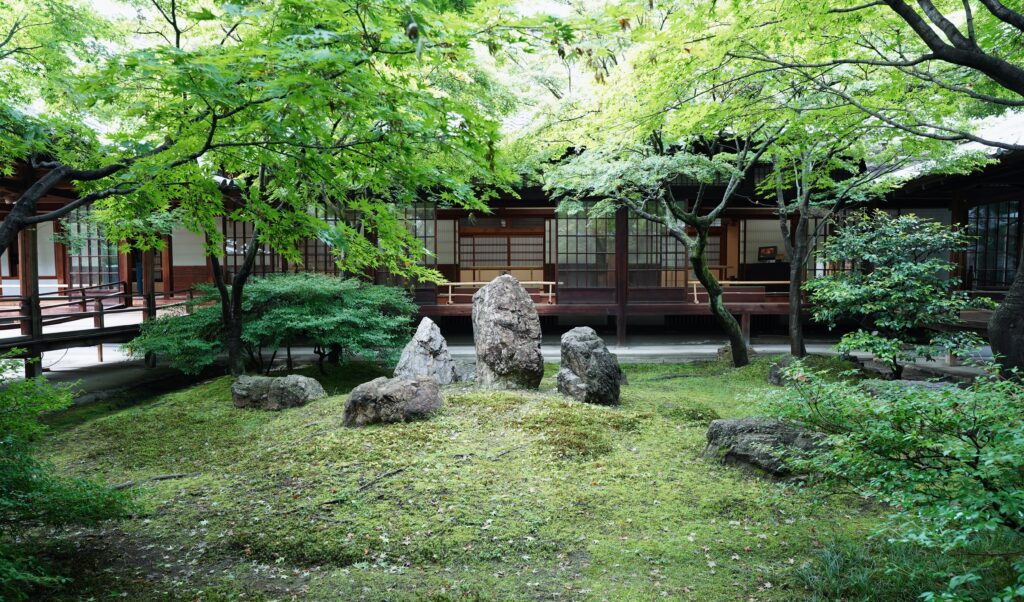
Choon-tei Garden is a courtyard located in Honbo Hall. The peak season for viewing the maple leaves in the Daio-en Garden of Kennin-ji Temple is from mid-November to late November. On the other hand, the Choon Garden is an indoor garden, so the maple leaves change color later. The best time to see the fall foliage in the Choon Garden is from late November to late December. It features a distinctive rock arrangement known as “Sanzonseki,” which consists of three vertically placed stones surrounded by horizontal lintel stones. To the east is a meditation stone for monks surrounded by maple trees.
The garden is decorated with deciduous trees such as maples and enkianthus, while a single evergreen camellia stands in the northeast corner. The gardener intended the camellia to be a symbol of enduring life and beauty during the winter months when the maples have shed their leaves.
The courtyard is designed to be viewed from all four sides, creating a dynamic and ever-changing perspective. The surrounding buildings and corridors frame the garden, enhancing the viewer’s experience.
○△□ Garden
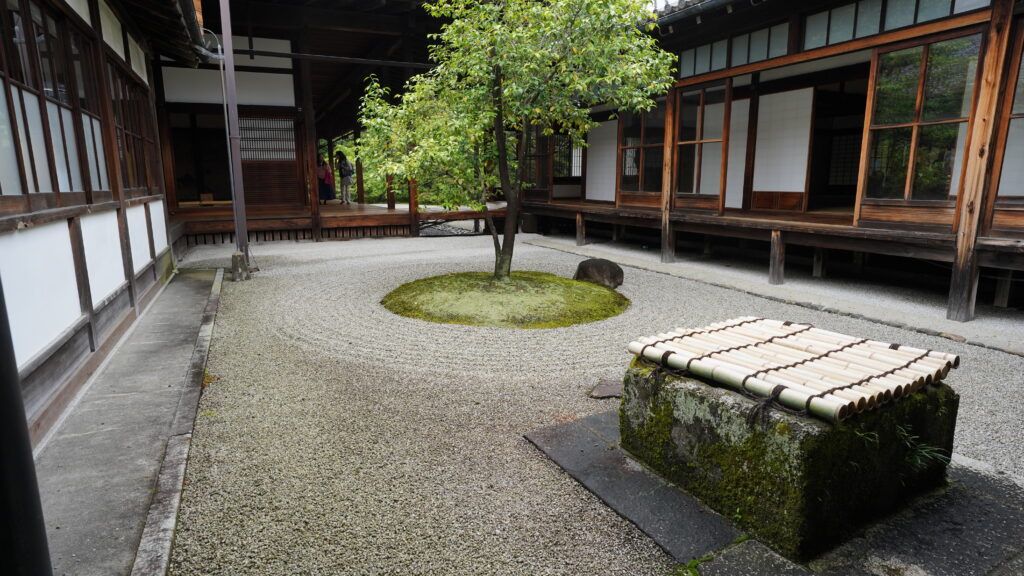
○△□ Garden is a unique garden designed by Yasuo Kitayama that incorporates the shapes of ○, △, and □. The “○” is represented by moss, the “△” by a triangular mound at the back of the garden, and the “□” by a well. These shapes symbolize the fundamental forms of the universe and correspond to the six elements of esoteric Buddhism: earth (□), water (○), and fire (△). The garden shows a remarkable balance with minimal elements. The central sasanqua camellia, an evergreen with green leaves even in winter, symbolizes eternal life.
Best season
Fall season
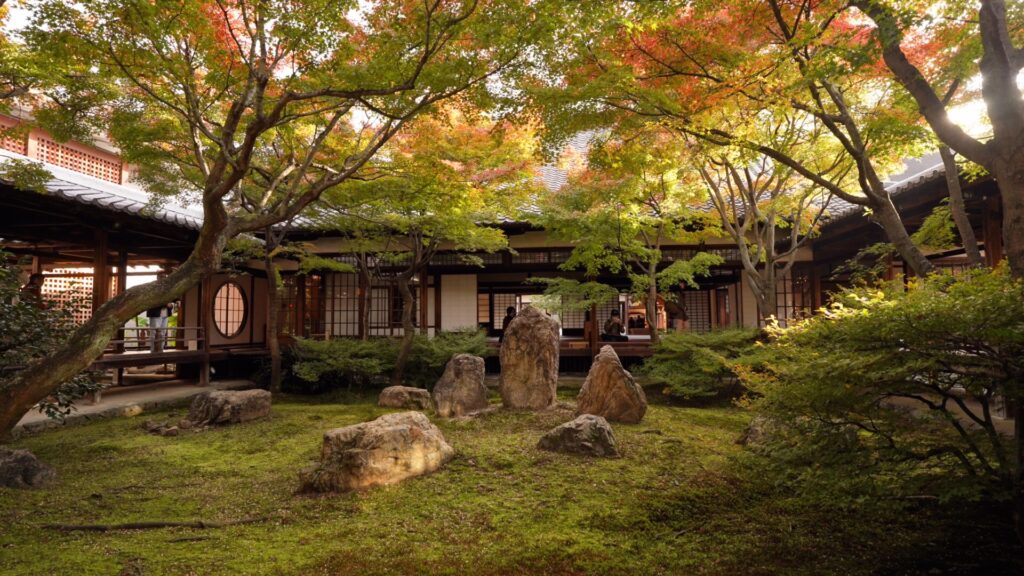
Kennin-ji Temple is at its best during the fall foliage season. The view of the Choon-in Garden from the rooms of the main hall is breathtaking. The maple trees and Japanese enkianthus are bursting with color, and the rock garden in the center of the garden creates a stunning landscape. The path leading to the Main Hall is also lined with maple trees and offers a beautiful view of the fall foliage. Peak foliage season is usually mid to late November.
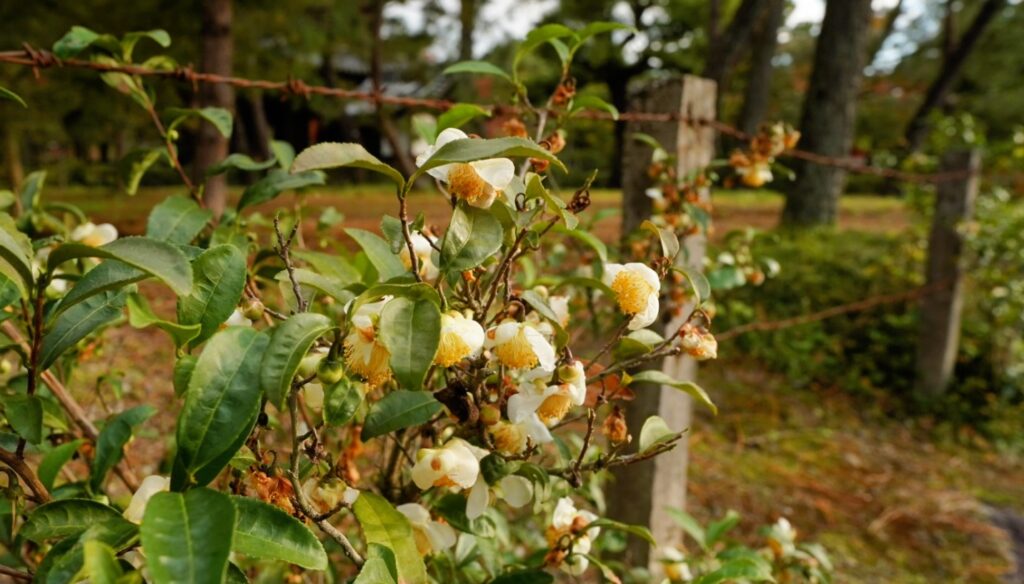
Eisai, the founder of Kennin-ji Temple, was a pioneer in introducing tea to Japan. He imported tea seeds from China and cultivated them in Japan for the first time. He served tea to monks as a stimulant before morning zazen meditation. Tea trees are cultivated on the temple grounds, and their white flowers bloom from mid-November to early December.
Rainy season
Daioin, the main garden of Kennin-ji Temple, is a karesansui (dry landscape) garden composed of moss, white gravel, and plantings. During the rainy season, the fresh moss become greener . Moreover, the cloudy days allow for a clear view of the patterns created by the white gravel. Daioin is one of the few gardens recommended during the rainy season. The rainy season typically lasts from mid-June to early July.
summer season
Kennin-ji Temple has a pond called Houjo-chi, which is located between the Sanmon Gate and the Chokushimon Gate. This pond has a beautiful lotus garden where delicate pink and white lotus flowers bloom from the end of June to the middle of July. Each blossom opens in the morning, closes in the afternoon, and completes its life cycle within three days.
Spring season
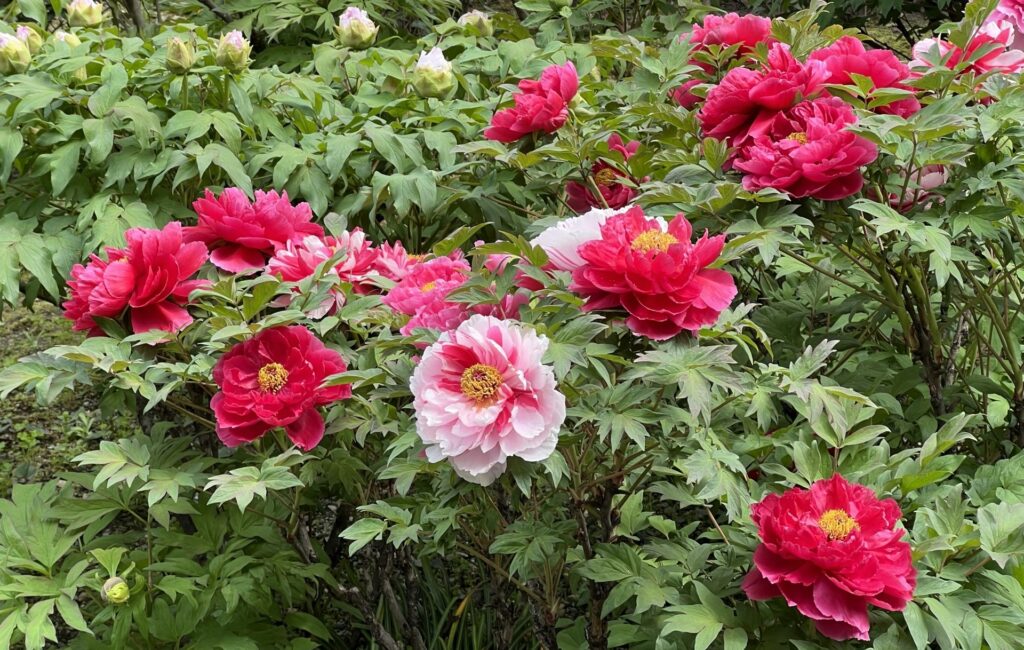
Peonies bloom around the Hutto Hall. Originally introduced from China as a medicinal plant, peonies are now grown for their luxurious appearance.
Crimson, pink and white flowers bloom from mid to late April.
Nighttime Illumination
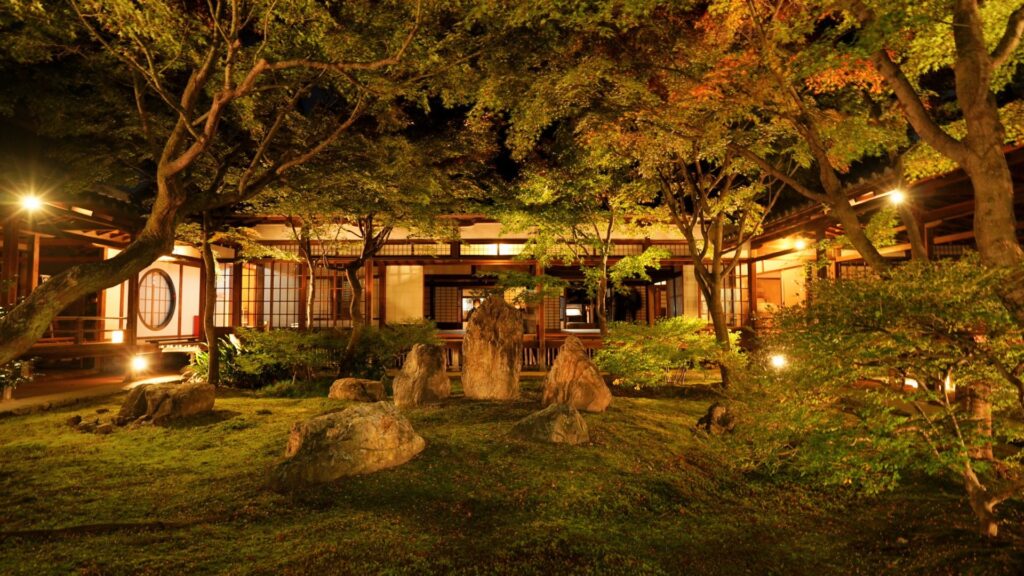
Kennin-ji Temple is holding a limited-time night illumination event. The event features a stunning illumination of the garden(Daio-en Garden, Choon-tei Garden, and ○△□ Garden) around Hatto Hall. In the Dharma Hall, visitors are invited to sit on chairs or lie on tatami mats to admire the magnificent ceiling painting of the “Twin Dragons” and the statue of Shakyamuni Buddha. To experience this magical atmosphere, advance reservations are required to ensure a serene and peaceful visit. The 2024 Fall Night Illumination is currently open for reservations.
Nighttime illumination ticket website
Information
Day time
Open Hours
10:00a.m. – 5:00p.m.
*The reception close at 4:30p.m.
Entrance fee
| Ticket types | Price |
|---|---|
| Adults | 800 yen |
| Students from high school to elementary school | 500 yen |
| Children under the age of elementary school | Free |
Nighttime Illumination
Open Hours
| Period | time |
|---|---|
| December.1st to 14th | 5:30 p.m. – 7:30 p.m. (Last entry is at 7:00 p.m.) |
Entrance Fee
Elementary school age and older : 1,800yen
Advance reservations are required for the autumn night illumination at Kennin-ji Temple.
Nighttime illumination ticket website.
Adress
〒605-0811 Kyoto, Higashiyama Ward, Komatsucho, 584
Link
Official Website
https://www.kenninji.jp(Only Japanese text)
